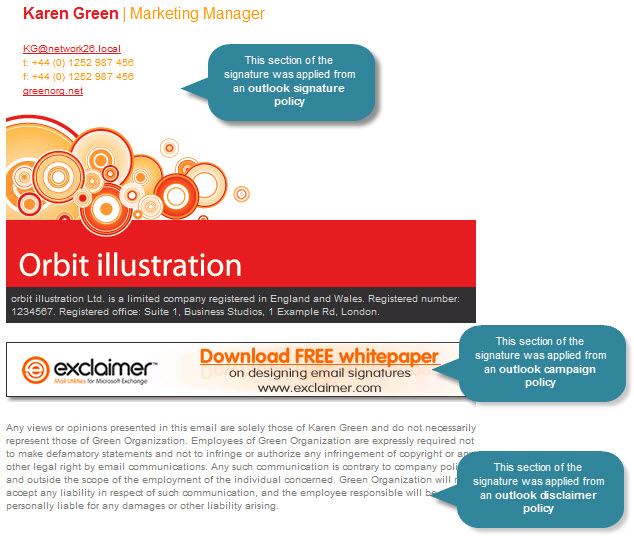Outlook policies
Within Exclaimer Signature Manager Outlook Edition, a signature is constructed using three distinct parts - a signature (business card content), a campaign (sales / promotional content) and a disclaimer (legal / corporate) content. These parts are defined in separate Outlook policies and then combined (when given criteria are met) to form the final Outlook signature. For example:

To achieve this, the following policy types are used:
Additionally, you can define mail format policies to control the default composition font presented to users when they choose to create, reply to or forward an email message.
You can create as many policies of each type as required, and set criteria to determine how they are applied under given circumstances. For example, you might have different signatures, campaigns and disclaimers for different departments within your organization, or for different office locations, or for specific time periods, etc.
It is not mandatory for signatures to be comprised of all three parts. A signature might be as simple as applying the sender's contact details and a company logo, or you might only want to apply disclaimer text for a given set of circumstances - you can use the policy types in any way that suits your organizational requirements.
|
Outlook policies are always processed in the same sequence - signatures, then campaigns and finally disclaimers. This means that the signature template is applied first, then the campaign template and then the disclaimer template (for further information see understanding how policies are processed. Whilst you cannot change this processing sequence, you can add atypical content to policies. For example, if you wish to include a campaign image before a signature, you could associate a campaign template with a signature policy and a signature template to a campaign policy. |









